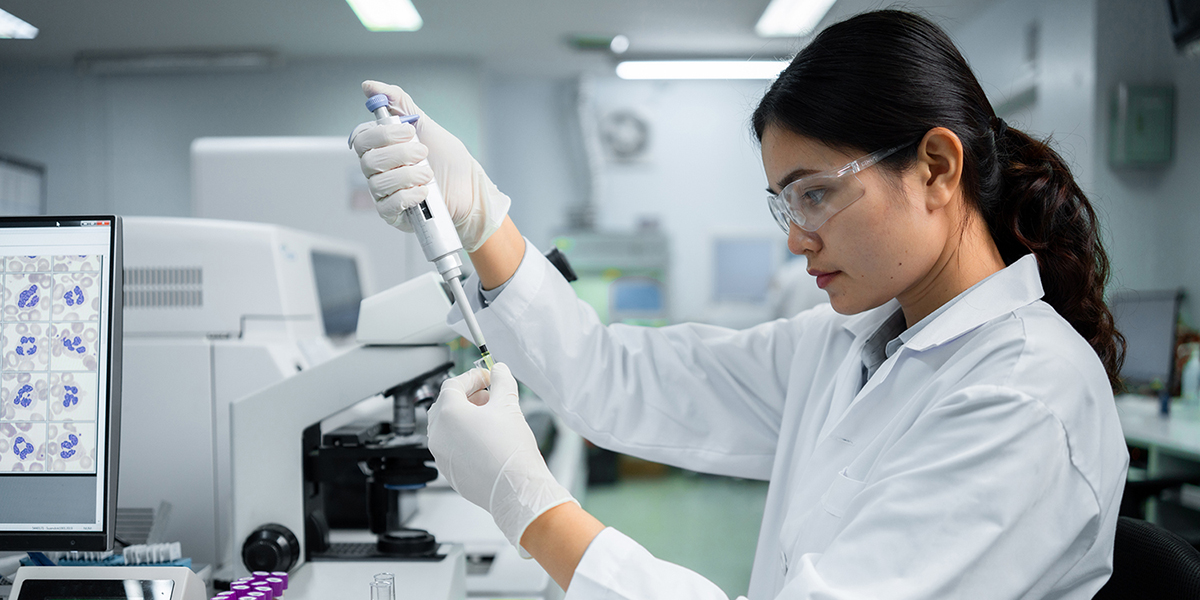
Introduction
Recent advances in next-generation sequencing (NGS) and synthetic biology have revolutionized the scale in which plasmids can be constructed, screened, and manipulated for a wide range of applications, including biomarker discovery, antibody engineering, genome editing, and gene therapy. 1
Plasmids are the bread and butter of molecular biology labs. The nucleic acid payload they carry encode the instructions for producing enzymes and proteins that conduct cell and gene editing, such as AAV transfection and CRISPR editing.1 The creation and quality control of large plasmid collections is a crucial process; this ensures that the correct synthetic DNA sequences are used in cell-based assays and editing in cell and gene engineering.
Overcoming Bottlenecks Associated with Plasmid Sequencing
Conventional library construction kits and homebrew methods typically require arduous quality control of input DNA and/or final libraries, are enzyme intensive, include multiple bead-based purification steps, and/or fail to provide a sufficient number of sequencing barcodes for optimal utilization of sequencing capacity on higher throughput sequencers. What’s more, biases introduced during library preparation influence sequencing quality and coverage, leading to incomplete or low-quality plasmid assemblies. 1
Historically, Sanger-based clone sequencing has been the workhorse approach for plasmid sequencing and QC. With this methodology, researchers can quickly interrogate the sequence flanking a vector insertion site at the individual clone level and get a sequencing result back for modest numbers of samples in a day or two.
Where Sanger-based plasmid sequencing often comes up short is when the number of clones to be sequenced is very large, or the information on plasmids can’t been read in a single Sanger read (generally up to several hundred base pairs). NGS has become an increasingly utilized method for this class of problems, which are more common in the modern era of low-cost DNA synthesis and high-throughput plasmid sequence generation.
One way to help address these challenges is through the use of NGS-based plasmid sequencing, a powerful tool that can confirm the presence of a single clonal sequence versus a mixed population of sequences that may contain synthesis errors. NGS plasmid sequence confirmation can rely on a reference sequence, or even produce a de novo read-based plasmid assembly, to confirm the presence and sequence of a clonal or mixed sequence without bias or a predetermined reference.
Nevertheless, despite de novo assembly being potentially more powerful, it is also more demanding in terms of coverage and uniformity requirements of the sequencing data.
Partnering to Improve Scale and Quality of Plasmid Sequencing
At seqWell, Inc., our mission is to overcome crucial challenges in NGS by developing technologies that can help unlock the potential of modern sequencing instruments. We view enhancing the efficiency and simplicity of library prep as the key to unlocking the power and scale of modern DNA sequencing instruments. One exciting application of this vision has been the development of a commercialized production-scale plasmid sequencing pipeline that significantly improves the scale and quality of NGS-based plasmid confirmation.
plexWell™ library preparation technology utilizes a unique, sequential, transposase-based tagging method to generate auto-normalized NGS libraries in true multiplexed fashion. This approach is particularly powerful in high-throughput sequencing of samples with relatively low sequence complexity (e.g., long PCR products, plasmids, and small genomes), where it is challenging to balance library construction capacity and cost with available sequencing capacity.1
For example, in collaboration with Addgene, we have used our plexWell™ to power NGS-based sequencing and confirmation of the largest collection of curated plasmids that Addgene hosts from all over the world.2 We have been able to help a number of customers deploy similar, scalable NGS-based workflows for plasmid confirmation to power cell and gene editing platforms.
Summary
We believe that our NGS-based plasmid sequencing pipeline will help overcome many of the challenges associated with NGS library prep. And we’re not stopping there. As the use of synthetic DNA and plasmids for cell and gene editing grows, seqWell will continue to develop ways to improve the scale and quality of NGS-based plasmid sequencing pipelines, including integration with automation, expanded multiplexing for up to 1000s of samples, and simpler workflows with reduced steps, handling and plasticware requirements.
